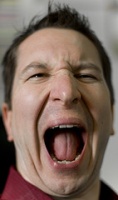
Q: In your workshop on the lisps and R, you said that we now have numbers to define jaw stability. Can you share them here? Yes! I would love to! As we all know, the mouth can move in a range that far exceeds that necessary for correct speech articulation, therefore it has to have mechanisms to hold its moving parts in place. This process is called oral stability. Oral stability consists of three parts: jaw stability, lip stability, and…



